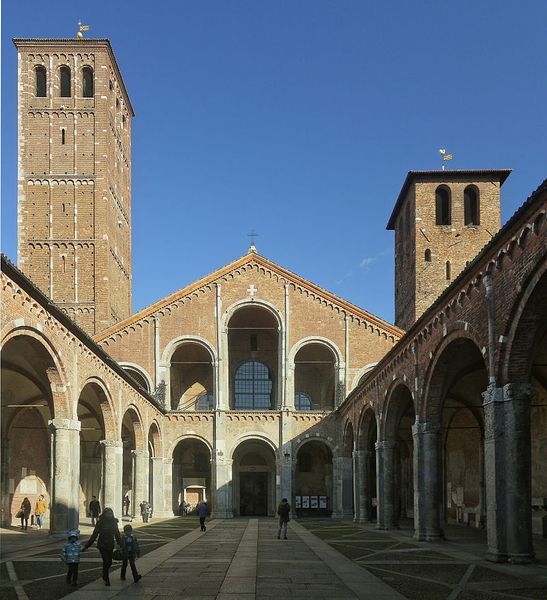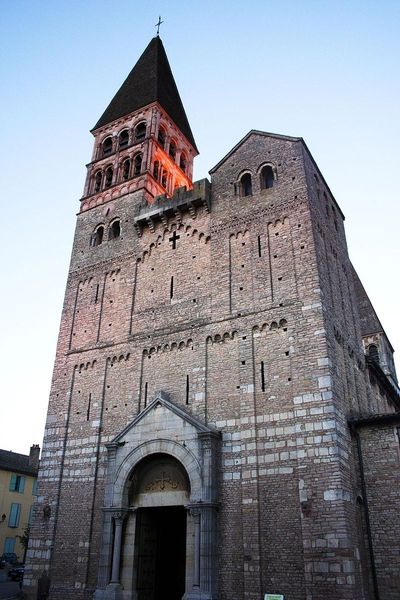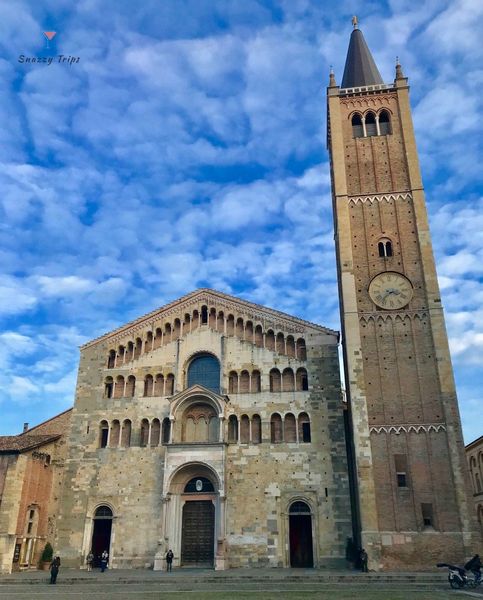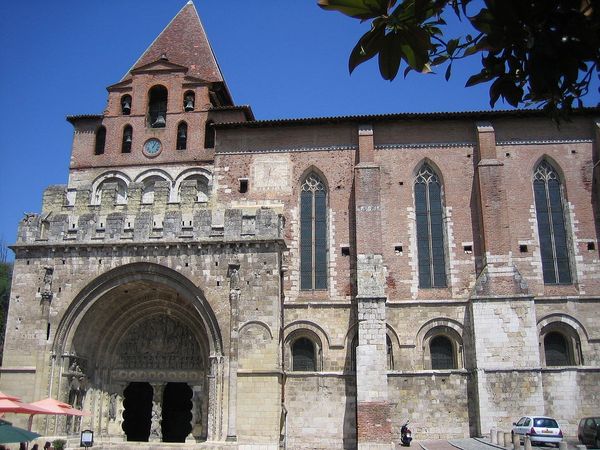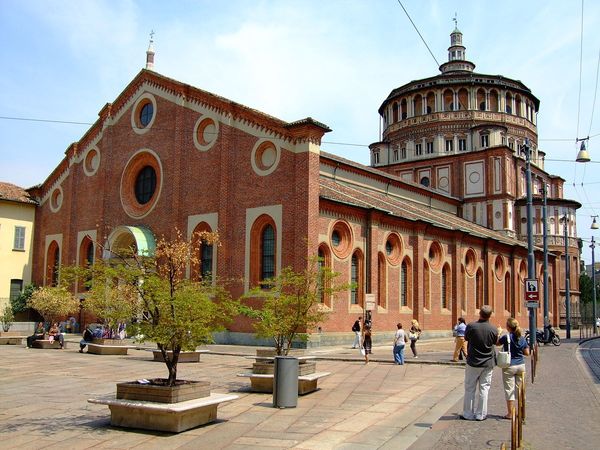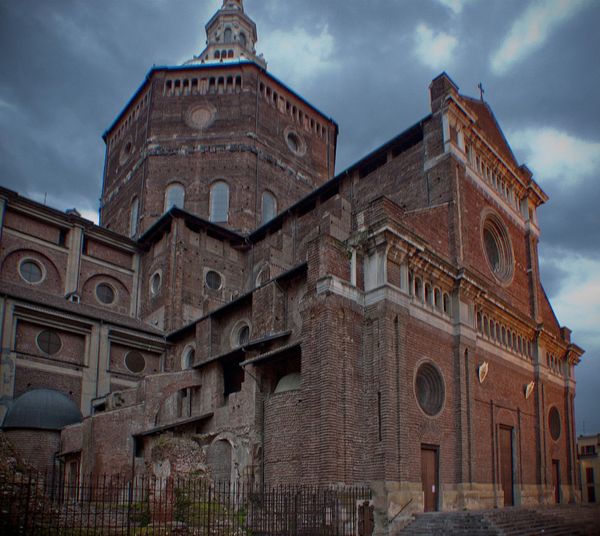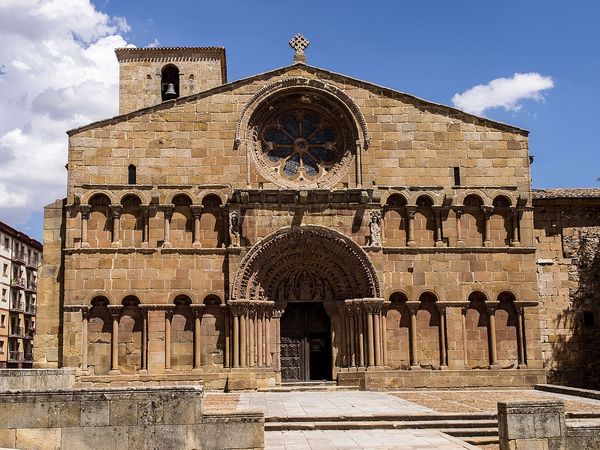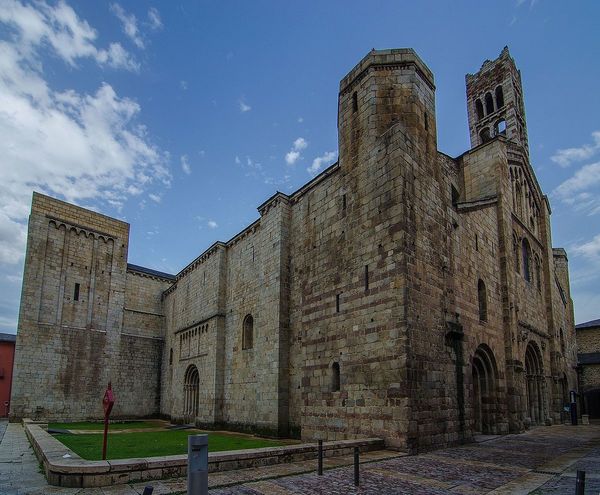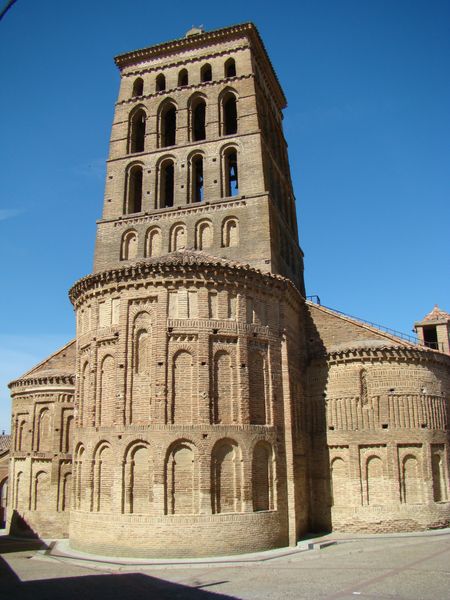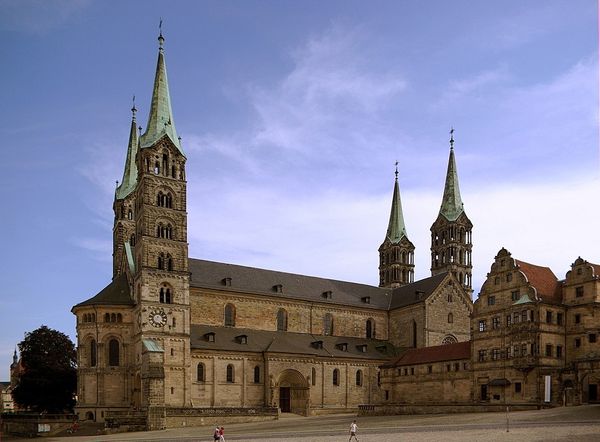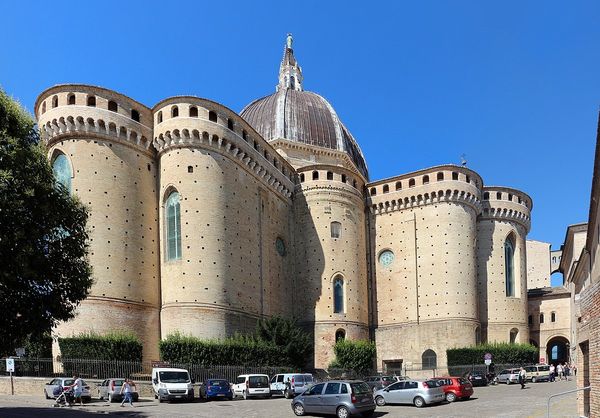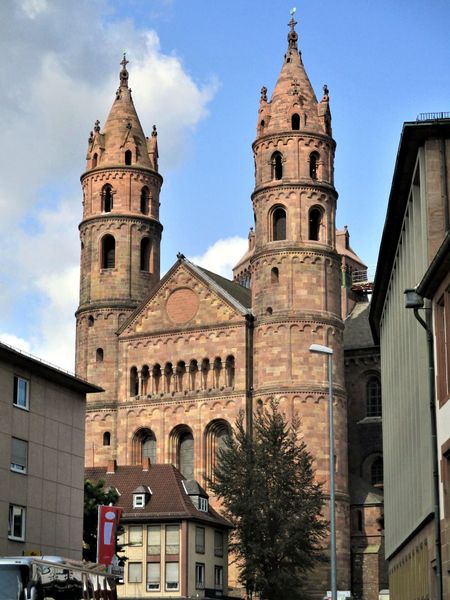
architecture
#
medieval
#
cityscape
#
historic architecture
#
romanesque
#
cityscape
#
architecture
Copyright: Public domain
Curator: Let's delve into the Basilica of Saint Sernin in Toulouse, France, constructed around 1180, a significant example of Romanesque architecture. Editor: My first impression? Solid, imposing, and the way the tower rises, broken up into multiple layers, feels like a visual hymn. There's a sense of grounded permanence. Curator: Absolutely. Consider the sheer scale. It was, and is, a testament to communal faith. These buildings were intentionally monumental, visual affirmations of power, both divine and earthly. Notice the rounded arches, thick walls, and relatively small windows – these are hallmarks of the Romanesque, drawing on older Roman building techniques. Editor: The limited light reinforces the sense of gravity and interiority. The structure feels almost geological, hewn from the earth itself, even though we know it's brick. Is the brick part of the semiotic code to represent an earthly association, given that many older basilicas used stone, or something to do with the availability of the raw building materials? Curator: Interesting. Historians believe the use of brick was strategic in Saint Sernin. Red brick itself carries connotations of strength and permanence—it symbolized Roman power in the region and suggested the continuity of authority that stretched back to that era. The tower specifically, with its octagonal layers, ascends almost like a beacon to the heavens. These towers were built for travelers or the sick, in the event they need somewhere to stay during their journey to or from the Holy Lands or Spain along the Santiago de Compostela routes. The layout and design served very utilitarian, as well as holy purposes. Editor: I also can't help but observe the rhythm of the windows along the facade. It’s as if the repetitive architectural modules of each layer create an almost musical visuality, a set of variations on a basic motif to indicate importance through scale and location. The small modules give way to a dramatic large circular window nearer the top. This reminds viewers to keep striving and working in a holy manner. Curator: It serves as a compelling reminder of medieval architectural ambitions and a desire to visually and culturally communicate a story. Editor: Precisely, analyzing its aesthetic qualities offers insight into its deeper symbolic layers. It helps reveal that complex cultural memory encoded in these beautiful forms.
Comments
No comments
Be the first to comment and join the conversation on the ultimate creative platform.
